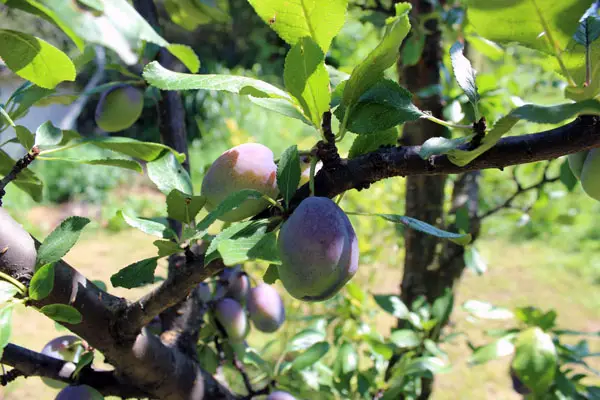Lecanium scale is just one of many types of scale insects that live on, and feed off fruit trees. Once fully grown, they are pea-sized and are a dark purple or brown colour situated on leaves and branches. They are attracted to the sap on the tree and position themselves in their chosen spot and feed on there at all times.

Lecanium scale can be problematic for a few tree varieties, the most common one being plum trees. Eggs are laid in May time and you might first notice these pests once they’ve hatched around June and July. Signs of lecanium scale, other than the insects themselves, include diseased branches, leaves dropping prematurely, bumps on branches, sooty mould, and sticky residue on the leaves.
Jump To...
Fruit Trees Vulnerable to Lecanium Scale
Lecanium scale can cause serious damage if you have a large infestation and can affect the yield of young trees too. The fruit trees vulnerable to lecanium scale include:
- Plum trees (most common)
- Raspberry bushes
- Orange trees
- Lemon trees
Also found on:
- Oak trees
- Maple trees
- Birch trees
Lecanium Scale Identification – Lifecycle
Lecanium scale pests differ in appearance throughout the year and effective diagnosis of infestation involves knowing what signs to look for and when.
To help with identification, here’s what they look like during the growing season and when you should be looking out for those telltale signs of an infestation at different points in their lifecycle.
Spring
Lecanium scale can lay up to 200 eggs. They stay under the body of the parent which expands and forms a protective cover over the eggs. A Lecanium egg clutch will look like a helmet shape on the twigs of your friut three. It will be hard in texture. If you break one open the eggs will be very small, and almost powdery looking.
Summer
Between May and July, these eggs hatch and the newly hatched crawlers will move off into a new section of the tree. Once they find somewhere to feed they are stationary and will not move again. They are very small and translucent in appearance.
Winter
These bugs are overwintering species so will not be active when it’s cold.
Damage
Often the first time you will notice a lecanium infestation is when the eggs are hatched. There are a few other signs to look out for though including:
- Bumpy growths or scales on branches.
- Sticky (honeydew) residue on leaves.
- Premature leaf drop.
- Diseased branches and leaves.
- Poor or unhealthy fruit yield.
Other pests can cause similar damage and are sometimes confused with lecanium scale. Such pests include mealybug and woolly aphids.
Treatment & Control
Prompt action is key when it comes to protecting your fruit tree from lecanium pests. If you find yourself with a fruit tree infestation from these scale pests, there are a few steps you can take to protect your trees and crop.
Practising good garden hygiene is always the best way to protect against infestation. Annual pruning at the correct time of the year will encourage health and vigour which will set your fruit tree in good stead all year round.
Chemical Free Control of Lecanium Scale
Wherever possible, treat any possible infestations with as minimal impact on other wildlife as possible. Examples include:
- Try to tolerate minor infestations – they are great for your garden ecosystem.
- Any insects or eggs spotted by the naked eye can be removed by hand although this is unlikely to solve the issue.
- Birds, ladybirds, and some wasps eat scaly insects so encourage such species in.
- Biological controls can be used which won’t kill other species.
Pesticide Control of Lecanium Scale
Sometimes, pesticide control will be needed to tackle larger infestations and this should be done carefully. We suggest:
- A plant oil winter wash. This can help to control those overwintering bugs, and might help with other pests too.
- Organic sprays can be effective against lecanium scale infestations.
- Insecticides with ingredients including pyrethroids lambda-cyhalothrin.
- Avoid flowering times due to the risk of killing pollinators.
Our guide to plum pests and diseases will help you identify and avoid common plum tree problems, and provide treatment information.
